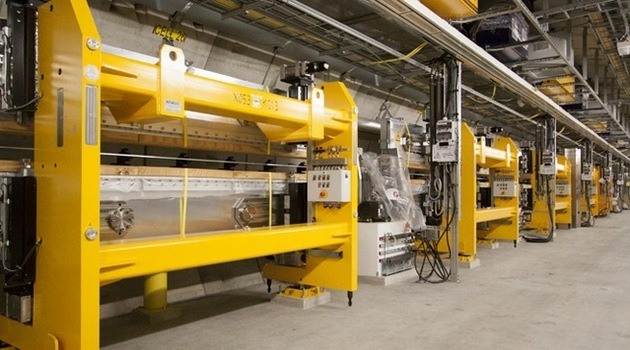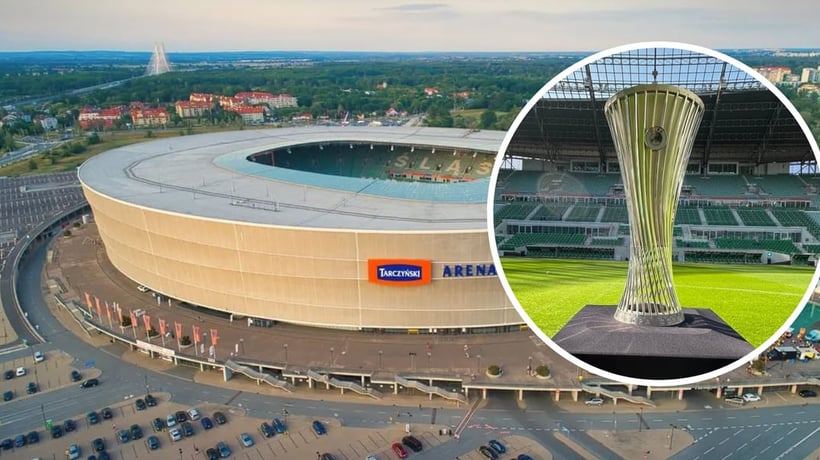Prof. Eugeniusz Rusiński is the head of the Department of Machine Design and Research  at the WUT. Over the years, he managed to successfully develop successful cooperation between science, industry and business at the university. His department runs projects with major companies operating in Poland in the sectors of energy, mining and metallurgy, the defence industry, the automotive industry, and many others. It also cooperates with international research centres, as well as numerous companies and international corporations, conducts research for companies producing machinery and equipment for surface mining, and also companies related to the automobile industry, for example VW, BMW, RUCKER, Mercedes-Benz, VOLVO, GKN.
at the WUT. Over the years, he managed to successfully develop successful cooperation between science, industry and business at the university. His department runs projects with major companies operating in Poland in the sectors of energy, mining and metallurgy, the defence industry, the automotive industry, and many others. It also cooperates with international research centres, as well as numerous companies and international corporations, conducts research for companies producing machinery and equipment for surface mining, and also companies related to the automobile industry, for example VW, BMW, RUCKER, Mercedes-Benz, VOLVO, GKN.  One of spectacular innovations involving a team led by Prof. Rusiński, similar in importance and prestige to the laser in Hamburg, was the implementation of antennae for the space station Columbus (2008). The project was conducted under the guidance of Prof. Paweł Kabacik from the WUT Faculty of Electronics, and Prof. Rusiński's team was responsible for strength calculations, design documentation and numerical simulations of straining and mounting of the antennas on the Columbus module. It is worth noting that in the competition for this "commission" researchers from the Wroclaw University outrun teams from all over the world. The antennas successfully operate on the orbital station to the day.
One of spectacular innovations involving a team led by Prof. Rusiński, similar in importance and prestige to the laser in Hamburg, was the implementation of antennae for the space station Columbus (2008). The project was conducted under the guidance of Prof. Paweł Kabacik from the WUT Faculty of Electronics, and Prof. Rusiński's team was responsible for strength calculations, design documentation and numerical simulations of straining and mounting of the antennas on the Columbus module. It is worth noting that in the competition for this "commission" researchers from the Wroclaw University outrun teams from all over the world. The antennas successfully operate on the orbital station to the day.
Wroclaw contributes to world's largest laser
Data publikacji:
Autor:
European XFEL is created in the research centre DESY (Deutsches Elektronen-Synchrotron - German Electron Synchrotron) in Hamburg. This is the most advanced tunable laser source of strong X-ray radiation, the infrastructure of which starts in the DESY centre and ends 3.5 kilometres further - in Schenefeld, where research laboratories are located.
The work on the unusual device involved a team from Wroclaw University of Technology, whose members are scientists from the departments of Machine Design and Research, headed by Prof. Eugeniusz Rusiński, and Cryogenic, Aviation and Process Engineering - Prof. M. Chorowski.
We talked to Prof. Eugeniusz Rusiński about the participation in this project and the importance of the work of Wroclaw engineers for the creation of the European X-ray Laser.
Professor, there is a feeling that this laser, now being created in Hamburg, may become one of those world-changing devices. Why is that?
Prof. Eugeniusz Rusiński, Head of the Department of Machine Construction and Research WUT: 'The laser will allow us to obtain a lot of technologies, which today are beyond the imagination of science fiction writers. There will certainly be new discoveries of more effective medicines and nanomaterials. This laser opens new opportunities to scientists. Imagine a camera, which will film processes at the atomic level, and take photos of the nanoworld, the dimensions of which are calculated in a billionth part of a meter. And all this in excellent quality and in three dimensions. We'll see the structure of molecules and the course of chemical reactions. We will gain access to the tiniest details of life processes.'
What will the largest laser in the world look like, and how will it operate?
'It's an impressive construction, but there is little to see outside. It is created underground, in a system of tunnels nearly 3.5 km long. The laser will generate ultra-short X-ray flashes, with the intensity billions of times greater than today's conventional X-ray sources. The whole project is worth 1.5 billion euro.'
What part of the task was entrusted to scientists from Wroclaw? What is the specific purpose of the work of our engineers?
'We designed a multi-channel helium distribution line XATL1, cryostats for testing cavities at the temperature of liquid helium, and the intermediate line, connecting cryostats with XATL1. Let me emphasize that this is a great achievement, because only a few research centres in the world would have been able to complete this task. Owing to the scientists from the Technical University of Wroclaw, Poland is co-owner of this laser.'
Was all the work under the commission carried out in WUT's laboratories, or did you work also on the spot, in Germany?
'Everything was designed, tested and perfected in the laboratories of Wroclaw University of Technology under the guidance of Prof. M. Chorowski and myself. In Hamburg we only supervised the installation of the structure. Please note that the entire line was made by a company from Wroclaw Technology Incubator.'
Were there any problems, complications, e.g. failed tests, the need for recalculation?
'Many of the problems were solved for the first time ever because it was an innovative project. You couldn't just apply the conventional solutions. Therefore, we amended the documentation hundreds of times. It was necessary to take into account, among others, the availability and usability of certain materials. This kind of innovative projects is always a very interesting challenge.
When do you expect the final "launch" of the laser? Is it already used to develop new technologies, or for other purposes?
'The laser is planned to be fully available to researchers in 2017. Please note that this project is unique. It involves teams of specialists from different fields of science and from different countries. One needs to develop new technologies even for the construction of the laser itself.
By: Małgorzata Wieliczko
Stay up to date with Wroclaw!
Click "follow" to know what's happening in Wroclaw. Find the most interesting news from www.wroclaw.pl in Google News!






